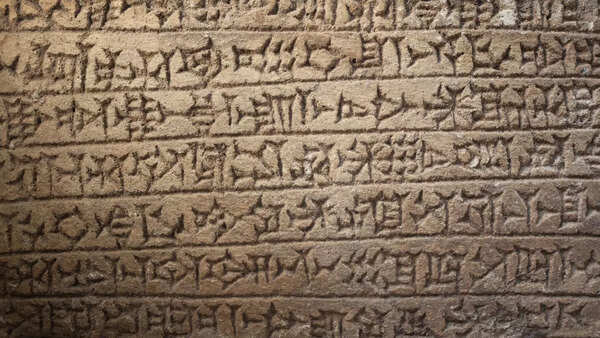This cuneiform tablet measures 4.2 x 3.5 cm, is 1.6 cm thick, and weighs approximately 28 grams. written in Akkadian cuneiformtext on the tablet details the purchase of a large quantity of wood products furnitureincluding tables, chairs and stools. The discovery sheds light on the country’s economic practices and administrative system late bronze age. The stele was found near the ancient city gate, suggesting it may have been part of an archive of administrative records.

representative image
Excavation team led by Dr. Murat Akar Mustafa Kemal Universityhas been working tirelessly on tablet translation and research. Dr. Jacob Lauinger, associate professor of Assyriology at Johns Hopkins University, and his doctoral student Zeynep Türker also participated in the study. Their initial findings showed that the tablet provided a complete inventory of furniture, as well as details of the buyers and sellers involved in the transaction. This level of detail provides valuable insights into the commercial activities and trade networks of the time.
The discovery of the slab is particularly important because it was discovered during restoration work following an earthquake in the area in early 2024. The discovery of the slab highlights the resilience of local communities and the importance of protecting cultural heritage even in the face of natural disasters.
The ancient city of Arara, where the slab was found, was a prosperous urban center in the second millennium BC. It is mainly inhabited by the Amorites, a Bronze Age people from the Levant. The city’s strategic location on important trade routes made it an important commercial and administrative center. The newly discovered tablets add to the wealth of knowledge about the economic and social structure of Arara.
The cuneiform script used on clay tablets is one of the oldest known writing systems, originally developed by the Sumerians in Mesopotamia. Akkadian, the language in which the inscription was written, was widely spoken in the ancient Near East and is considered the earliest known Semitic language. The unique cuneiform characters were created on clay tablets by highly educated scribes using reeds.
The discovery not only provides a glimpse into the economic practices of the Late Bronze Age, but also highlights the importance of archaeological research in understanding ancient civilizations. The detailed records on the clay tablets reveal a highly organized economy with meticulous record keeping and administrative oversight. Ongoing research aims to further explore the economic and administrative complexities of the ancient city of Arara, providing new insights into the region’s rich cultural heritage.
Actor Matthew Perry Keys undergoes mysterious transformation; shocking details from his bedroom







